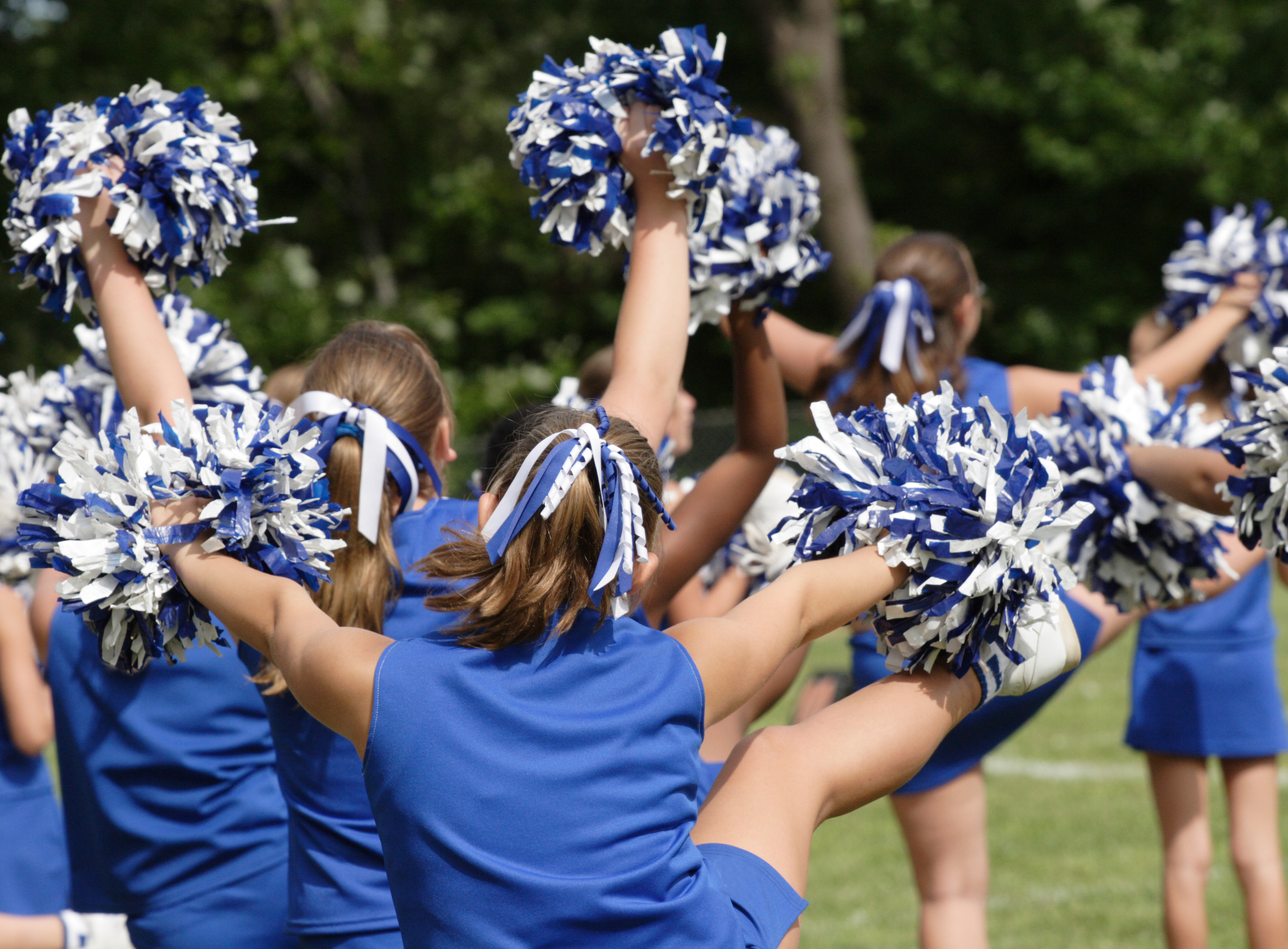
Decision may have implications for the protection of other industrial designs.
What happens when two companies battle over the rights to a combination of stripes, chevron lines, zigzags, and color-blocks on a cheerleader uniform? The U.S. Supreme Court articulates a new test for determining whether design features on clothing are protectable under federal copyright law.
A recent Supreme Court case, Star Athletica, LLC v. Varsity Brands, Inc., involved a legal match-up between two cheerleader uniform companies and resulted in the Court granting broad copyright protection for industrial designs. Copyright protection is unavailable for “useful articles,” meaning objects with a utilitarian function such as lamps or clothing items. In Star Athletica, industry titan Varsity Brands and market new-comer Star Athletica disagreed whether the actual designs on a clothing item constituted a protectable work of art, or merely a common industrial design that lacks copyright protection.
Almost all uniforms worn by cheerleading and dance teams across the United States are manufactured by Varsity Brands’ “empire of pep,” as Fortune once referred to the company. After Star Athletica entered the market and published its first catalogue of uniforms, Varsity Brands sued for copyright infringement almost immediately—alleging that Star Athletica’s cheerleader uniforms, similar in style, infringed the copyrights that Varsity Brands had registered for the drawings and photos of its uniforms.
Without granting a full trial, a federal court in Tennessee ruled that copyright protection did not apply to Varsity Brands’ designs, because those designs could not conceptually be separated from the “usefulness” of the uniforms themselves. The court determined that the design embodied “standard” cheerleader uniforms, and therefore did not constitute its own work of art.
Varsity Brands appealed, and the U.S. Court of Appeals for the Sixth Circuit reversed the lower court’s judgment, finding that the Copyright Act does indeed allow graphics of a design to be copyrighted even if those designs cannot be separated from the “useful article” itself.
Star Athletica appealed to the Supreme Court, which decided the case in March 2017.
At the Supreme Court, Star Athletica argued that the Sixth Circuit’s decision would stifle competition within the cheerleader uniform industry by allowing companies to create copyright claims on all types of garments solely based on the “arrangement of stripes and color blocks.” In oral arguments, counsel for Star Athletica contended that applying the copyright protection of the drawings to actual uniforms was inappropriate because the designs both record and inform the utility of the uniforms.
In response, Varsity Brands argued that its two-dimensional design did not alone determine the three-dimensional uniform. In other words, Varsity Brands asserted that the fact that there are “examples of uniforms that have neither stripes nor chevrons nor color blocks,” demonstrated that the designs and uniforms are separate works. Furthermore, Varsity Brands emphasized that the two-dimensional design could be replicated on other mediums—aside from uniforms—as a stand-alone work of art.
The Supreme Court, in a majority opinion by Justice Clarence Thomas, agreed with Varsity Brands on the “separability” of the two-dimensional design and the three-dimensional uniform—and in doing so clarified the legal test for what constitutes a “useful article” under copyright law.
The various federal circuit courts of appeals had applied no fewer than 10 different tests to determine whether designs separated from their “useful articles” could be copyrighted. The Supreme Court resolved all tests in favor of a two-prong inquiry. The Court held that a design can be copyrighted only if it (1) can be perceived as a two- or three-dimensional work of art separate from the useful article, and (2) would qualify as a protectable pictorial, graphic, or sculptural work if it were imagined separately from the useful article into which it is incorporated.
Applying this test, the six-Justice majority decided that the “usefulness” inquiry focuses more on the design—in this case the chevron stripes and patterns—rather than the cheerleading uniform itself. The majority relied on its past decision in Mazer v. Stein, in which the Court found that a base used for electric lamps is protectable under copyright law, notwithstanding the fact that the lamp itself is a utilitarian, mass-produced item ineligible for copyright protection.
In Star Athletica, the Supreme Court focused on the decorative design features rather than the uniform garment. The Court ruled in favor of Varsity Brands, holding that although the three-dimensional shape and style of the underlying uniform are not afforded copyright protection, the two-dimensional design itself could be protected as a separate work of art because it could be fixed on a separate medium, and it could be imagined separately from an actual uniform.
In a dissenting opinion, Justices Stephen Breyer and Anthony Kennedy agreed with the majority’s two-prong test, but disagreed that the actual design passed that test. Justice Breyer reasoned that Varsity Brands’ design was inseparable from the “useful article”—the uniform—because it would be impossible to extract the design to another medium without replicating images of a cheerleader uniform. Justice Breyer relied on the fact that Varsity Brands’ two-dimensional designs were “only pictures of cheerleader uniforms,” rendering it impossible to perceive the design separately from the uniform.
Although the Supreme Court’s decision in Star Athletica provided some additional clarity for evaluating industrial designs with artistic elements, unpredictability lies ahead as lower courts now apply this new test to different designs. Some commentators posit that the Court’s decision could impact the legality of the designer knock-off industry and 3D printing. And although the Court’s decision will certainly affect those in the fashion industry, the ramifications of the decision will also be important for all companies that employ designs or decorative elements in their products.
This essay is part of an eight-part series, entitled The Supreme Court’s 2016–2017 Regulatory Term.



